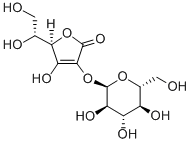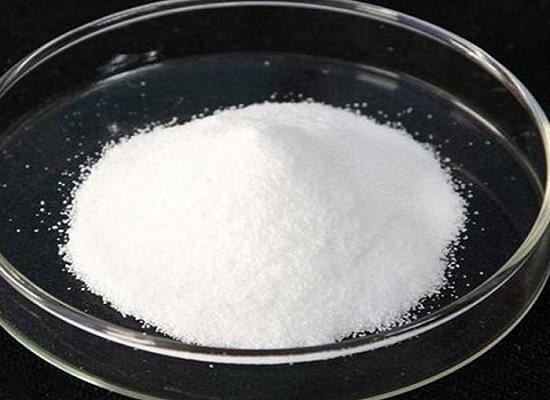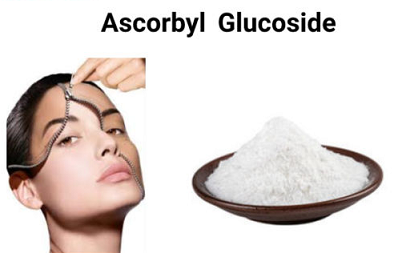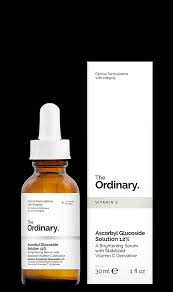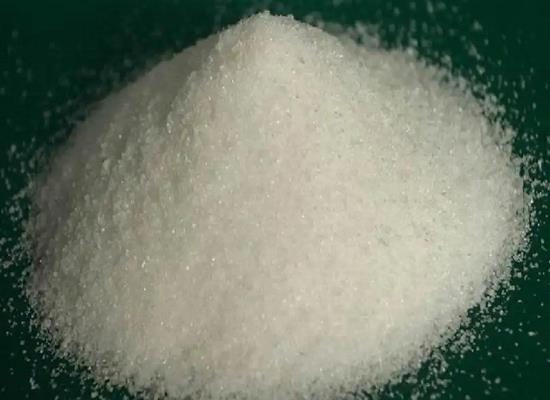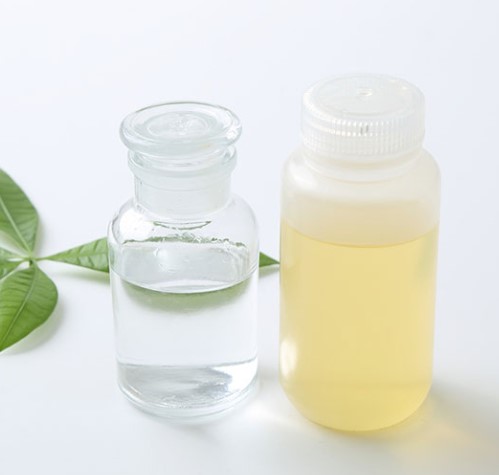Ascorbyl Glucoside: A Stable and Effective Skincare Ingredient with Multiple Efficacy
General Description
Ascorbyl glucoside is a stable and highly effective skincare ingredient with multiple benefits. It exhibits high stability, remaining unaffected by temperature, pH levels, or metal ions, ensuring the quality of cosmetic products. Its mechanism of action involves enzymatic hydrolysis, releasing bioactive vitamin C that provides antioxidant protection, stimulates collagen synthesis, and inhibits melanin production. Ascorbyl glucoside effectively brightens the complexion, reduces pigmentation, improves skin tone, and combats UV damage. It also promotes collagen synthesis, leading to youthful-looking skin, and helps reduce wrinkles and rough texture. Overall, Ascorbyl glucoside is an ideal ingredient for enhancing the stability and efficacy of cosmetic and skincare products.
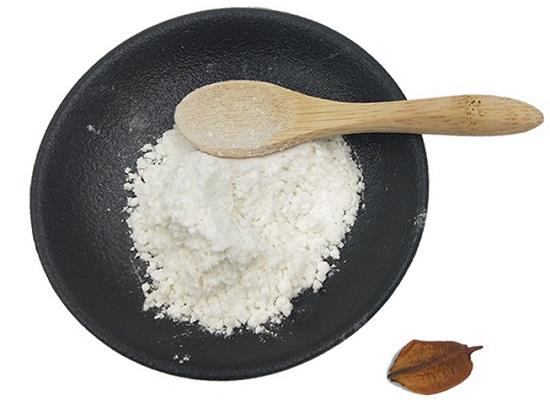
Figure 1. Ascorbyl glucoside
Properties
Ascorbyl glucoside, possesses several properties that make it advantageous for use in various cosmetic and skincare products. Firstly, Ascorbyl glucoside exhibits high stability, remaining unaffected by factors such as high temperatures, low pH levels, or the presence of metal ions. This characteristic contributes to the overall stability of products containing Ascorbyl glucoside, ensuring their quality is maintained even under adverse conditions. In terms of pH stability in aqueous solutions, a comparison study was conducted with a 0.2% (W/V) Ascorbyl glucoside solution and a 0.2% (W/V) sodium ascorbyl phosphate solution. The samples were stored in airtight glass bottles, kept in a dark environment at a temperature of 50℃ for 20 days. The results demonstrated that Ascorbyl glucoside remained stable across different pH environments. Furthermore, Ascorbyl glucoside demonstrates excellent stability and color retention in the presence of metal ions. A 0.5% (W/V) Ascorbyl glucoside solution was mixed with five different metal salts (10mmol/L), adjusted to pH 6, and heated at 100℃ for 2.5 hours. The study revealed that Ascorbyl glucoside maintained its stability and color integrity. Another significant property of Ascorbyl glucoside is its ability to resist discoloration. Throughout the production and storage process of cosmetic formulations, Ascorbyl glucoside retains its color, contributing to the overall stability of the product. A comparison study was conducted using a 10% aqueous solution of three substances: magnesium ascorbyl phosphate (1), Ascorbyl glucoside (2), and sodium ascorbyl phosphate (3). The results showed that Ascorbyl glucoside exhibited superior color retention compared to the other vitamin C derivatives. In conclusion, Ascorbyl glucoside possesses high stability, resistance to discoloration, and excellent color retention, making it an ideal ingredient for enhancing the stability and quality of cosmetic and skincare products. 1
Mechanism of Action
Ascorbyl glucoside is a derivative of vitamin C that exhibits various beneficial effects on the skin. Its mechanism of action involves the enzymatic hydrolysis of Ascorbyl glucoside by alpha-glucosidase, an enzyme present in the cell membrane of skin cells. This process releases vitamin C in a highly bioactive form. Once inside the cells, vitamin C starts to exert its well-documented and significant biological effects. These effects include antioxidant properties, collagen synthesis stimulation, and inhibition of melanin production. Vitamin C also plays a crucial role in promoting skin brightening, improving skin texture, and reducing the appearance of wrinkles and fine lines. The hydrolysis of Ascorbyl glucoside is a continuous process, ensuring a sustained and stable physiological effect on the skin. This means that the released vitamin C remains active for an extended period, allowing for prolonged and consistent benefits to the skin. Overall, the action mechanism of ascorbyl glucoside involves the enzymatic conversion of Ascorbyl glucoside into vitamin C, which then exerts its multiple positive effects on the skin, providing antioxidant protection, enhancing collagen synthesis, and promoting a more youthful and radiant complexion. 1
Efficacy in Skin
Ascorbyl glucoside is a powerful skincare ingredient with multiple benefits. Firstly, it effectively brightens the complexion by inhibiting melanin production. Once converted into vitamin C and absorbed by the skin cells, Ascorbyl glucoside works by suppressing the activity of tyrosinase, an enzyme involved in melanin synthesis. By inhibiting tyrosinase, Ascorbyl glucoside reduces the production of dopaquinone, an intermediate substance in melanin synthesis. Additionally, it converts dopaquinone into L-dopa, providing an added benefit. Secondly, Ascorbyl glucoside helps to reduce existing pigmentation and improve skin tone. Once transformed into vitamin C within the skin cells, it minimizes the reaction responsible for pigmentation, resulting in a visibly brighter complexion. Furthermore, Ascorbyl glucoside helps to combat UV damage by inhibiting the harmful effects of ultraviolet radiation on the cells. After conversion into vitamin C, Ascorbyl glucoside significantly reduces the formation of free radicals caused by UV exposure, thus minimizing skin damage. In addition to its brightening effects, Ascorbyl glucoside promotes collagen synthesis, an essential protein for skin structure and protection. By entering the fibroblast cells, Ascorbyl glucoside stimulates collagen production, which plays a crucial role in maintaining youthful-looking skin. This anti-aging effect can be maintained over time. Lastly, formulas containing Ascorbyl glucoside have demonstrated notable improvements in reducing wrinkles and rough skin texture. In conclusion, Ascorbyl glucoside offers a range of benefits including brightening the complexion, inhibiting melanin production, reducing pigmentation, protecting against UV damage, promoting collagen synthesis, and improving wrinkles and skin texture. 2
Reference
1. Jaber M, Jaber B, Hamed S, AlKhatib HS. Preparation and evaluation of ascorbyl glucoside and ascorbic acid solid in oil nanodispersions for corneal epithelial wound healing. Int J Pharm. 2022, 627: 22227.
2. Wu S, Liu G, Shao P, et al. Transdermal Sustained Release Properties and Anti-Photoaging Efficacy of Liposome-Thermosensitive Hydrogel System. Adv Healthc Mater. 2023, 22: e2301933.
);You may like
Related articles And Qustion
See also
Lastest Price from Ascorbyl glucoside manufacturers
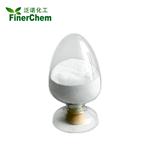
US $5.00/KG2024-04-30
- CAS:
- 129499-78-1
- Min. Order:
- 1KG
- Purity:
- 99%
- Supply Ability:
- 500mt/year

US $3.80/Grams2024-04-30
- CAS:
- 129499-78-1
- Min. Order:
- 5000Grams
- Purity:
- 99.99%
- Supply Ability:
- 100Tons
